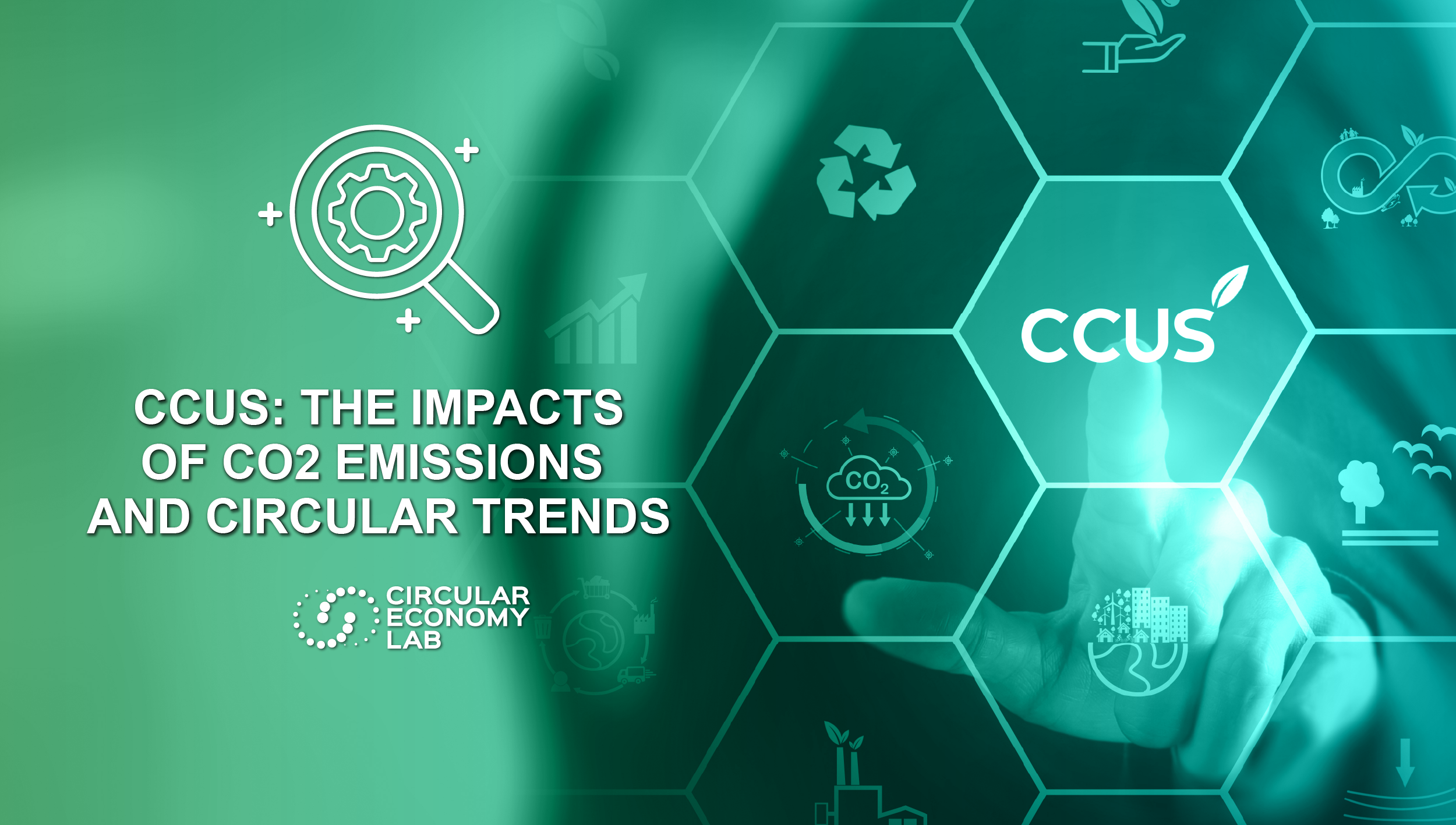
CCUS: Impacts of CO2 Emissions and Circular Trends
This article represents the first of four pieces dedicated to exploring the methodologies of Carbon Capture Utilization & Storage (CCUS). With contributions from experts at the Circular Economy Lab, we will delve into the primary impacts related to CO2 emissions and the key trends within a circular economy framework concerning its capture and use. We will also examine the regulatory framework and the technological levers that support CCUS processes and techniques, concluding with examples of best practices aimed at consolidating synergistic approaches to CO2 capture and valorization, always from a circular economy perspective.
THE IMPACTS OF CO2 CONCENTRATION IN THE ATMOSPHERE
Carbon dioxide (CO2) is a greenhouse gas mainly produced by the combustion of fossil resources (oil, natural gas, coal), contributing, along with other greenhouse gases, to heat retention in the atmosphere. Although the combustion of fossil fuels has been known for centuries, only in the last two hundred years, with industrialization based on the massive use of fossil fuels, have human activities started emitting significant quantities of greenhouse gases into the atmosphere, leading to the now well-known phenomenon of global warming, also known as Climate Change.
According to the World Meteorological Organization (WMO), 2024 will be the hottest year ever recorded, following a long series of exceptionally high monthly average temperatures. In this context, on November 11, 2024, the International Climate Conference COP29 began in Baku (Azerbaijan), and in preparation for the event, the UNFCCC's Synthesis Report highlighted that the mitigation and adaptation commitments made by governments so far are insufficient to keep the global average temperature increase to 1.5°C, as defined by the Paris Agreement.
The United Nations identifies the following as the five main effects of climate change:
- Higher temperatures: More sweltering days; heatwaves; heat-related illnesses; faster spread of wildfires;
- More violent storms: Expansion of tropical storms, cyclones, hurricanes, and typhoons capable of destroying entire communities;
- Increased droughts: Water stress; sandstorms; desertification;
- Warming and rising oceans: Progressive melting of ice caps; ocean acidification with a real threat to marine life; rising sea levels threatening coastal and island communities;
- Loss of species: One million species at risk of extinction; spread of pests and diseases.
THE APPLICATION OF CIRCULAR ECONOMY LOGICS TO CCUS
While the principles underpinning the circular economy paradigm encourage the production system to reduce greenhouse gas emissions to zero, the scientific and political community is currently seeking innovative solutions to reduce CO2 concentration in the atmosphere. Among these, the capture and utilization of CO2 presents a strategy for transforming a problem into an opportunity.
CCU technologies involve capturing CO2 directly from industrial emissions or from the atmosphere. Once captured, CO2 can be used as raw material for producing a wide range of products, from synthetic fuels to building materials. CCU fits within the circular economy discourse, promoting more efficient resource use and transforming waste into a resource.
KEY TRENDS IN THE EMERGING CO2 MARKET
Among the most interesting trends in the development of the CCU market is the growth linked to the diversification and heterogeneity of uses for captured CO2. While in the past, CO2 was mainly used in a few sectors, such as synthetic fuel production, today it has a wide range of applications in construction, polymers, chemicals, and even as basic ingredients in innovative high-protein food products. Examples of applications will be explored in subsequent articles within this thematic thread.
Another exciting trend in this sector is the creation and consolidation of partnerships between private companies, governments, and research institutions aiming to accelerate the development and dissemination of innovative technologies. These collaborations often arise from a synergistic, multi-stakeholder approach, transcending national borders. As we will see in the final article of this series, international cooperation fosters the emergence of CCU hubs—industrial infrastructures that encompass the entire value chain, from CO2 capture plants to treatment and conversion plants.
THE GROWING INTEREST IN STORAGE TECHNOLOGIES
It is worth noting that the acronym CCUS also includes the "S" for Storage, which involves technologies aimed at safely storing captured CO2 underground, thus preventing its release into the atmosphere. Internationally, there is increasing interest in large-scale CO2 storage projects. As we will see in the second article of this series, governments are introducing policies and incentives to promote the adoption of these technologies. The valorization and storage of carbon dioxide represent two different approaches to applying circular economy principles to the relevant sector. While in the case of valorization, the aim is to transform waste into a resource, in storage, the goal is to isolate the waste, thereby reducing the concentration of greenhouse gases in the atmosphere.
In conclusion, the release of large quantities of carbon dioxide into the atmosphere, resulting from the intensification of anthropogenic production activities, has not only brought economic and industrial progress but also highlighted the implications of this phenomenon on the planet's climate, bringing the issue of Climate Change to the center of the international public debate. CCU techniques represent an innovative solution to address the challenge of global warming by focusing on the production of innovative materials made from captured CO2 and fostering the creation of hubs that optimize CO2 capture and utilization processes, contributing to a more circular and sustainable economy. However, to reach the full potential of these solutions offered by the innovation ecosystem, several challenges must be overcome, such as establishing a valid regulatory framework, a topic that will be addressed in the next article of this thematic series.